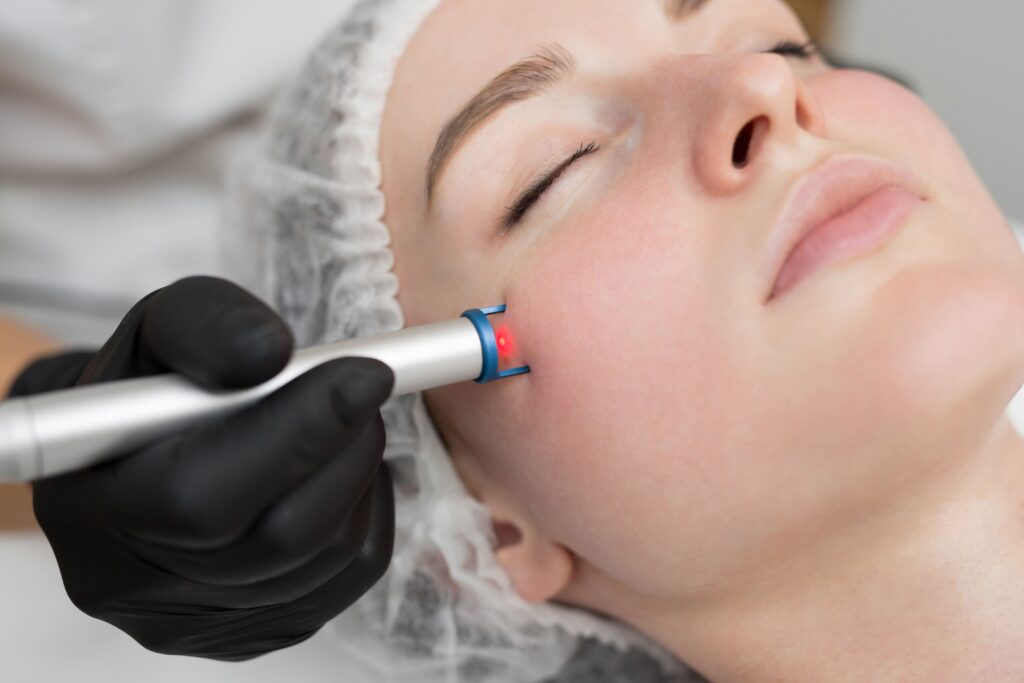Acne is a common skin condition among teenagers, but for some, it leaves behind more than just temporary blemishes. Acne scars can be deep, persistent, and emotionally distressing, affecting self-esteem during a critical phase of identity development. These scars result from inflamed acne lesions that damage skin tissue. Common types include atrophic scars (like icepick, boxcar, and rolling scars) and post-inflammatory hyperpigmentation. Understanding the type and severity of acne scars is the first step toward choosing the right treatment—especially for laser therapy, which can be highly effective for certain scar types.
Why Laser Treatment Is a Strong Option for Teens:
Scar Laser Treatment in Dubai (إزالة الندبات بالليزر في دبي) offers a non-invasive, advanced option for managing acne scars in teens. Unlike topical creams that may take months to show minimal improvement, lasers target deeper layers of the skin to remodel collagen and promote new skin growth. It is suitable for various scar types and skin tones, depending on the technology used. Teenagers with stubborn scars, who haven’t responded well to over-the-counter remedies, often find laser treatment a promising solution to restore smoother, clearer skin without the need for surgery or downtime-intensive procedures.
Types of Laser Treatments Used for Acne Scars:
Different types of lasers cater to different acne scar needs. The two most commonly used lasers are ablative and non-ablative. Ablative lasers like CO2 or Er:YAG remove the top layer of the skin and are highly effective for deep scars. Non-ablative lasers, such as fractional or pulsed dye lasers, work by stimulating collagen without removing skin layers—ideal for teens concerned about sensitivity or recovery time. Fractional laser treatments are particularly popular as they strike a balance between effectiveness and minimal downtime, targeting small fractions of the skin while allowing rapid healing.
Preparing for Laser Treatment: What Teens Should Know
Preparation is key to a successful laser treatment experience. Teens must undergo a skin assessment to determine scar type, skin tone, and overall skin health. They may be asked to avoid sun exposure, certain skincare products, and medications (like retinoids or antibiotics) for a week or more before the procedure. It’s also important to manage expectations—while laser treatment can significantly reduce the appearance of scars, it may take several sessions and results vary. A calm mindset and adherence to pre-treatment instructions can make a big difference in outcomes.
The Procedure: What Happens During Laser Treatment
Laser treatment sessions are typically short, often lasting 30 to 60 minutes, depending on the area treated. Teens may feel mild discomfort, like a rubber band snapping against the skin, but numbing cream is usually applied to reduce pain. The laser device is passed over the skin, delivering focused beams of light to resurface the scarred areas. There’s no need for incisions, and most teens can return home the same day. The number of sessions required varies based on scar severity, but many teens notice improvement after just 2–3 sessions.
Aftercare and Recovery Tips for Teen Skin:
Post-treatment care is crucial, especially for teenage skin, which can be sensitive. Redness, swelling, and a sunburn-like sensation are common for a few days. Teens should avoid sun exposure, strenuous exercise, and harsh skincare products during this period. Gentle cleansing and using doctor-recommended moisturizers and sunscreen can speed up healing. Picking or touching the treated skin must be avoided to prevent infection or further scarring. Recovery typically lasts 3 to 7 days for non-ablative lasers and slightly longer for ablative treatments.
Emotional Benefits: Boosting Teen Confidence
The psychological impact of acne scars in teens is often underestimated. Laser treatment doesn’t just improve physical appearance—it can have profound emotional benefits. Many teens report increased self-confidence, better social interaction, and reduced anxiety about their skin post-treatment. Addressing acne scars early through laser therapy can prevent long-term self-esteem issues. While the results are not instant, the gradual improvement helps teens gain a more positive self-image over time, especially when supported by family and a healthy lifestyle.
Setting Realistic Expectations and Long-Term Care:
Laser treatment is not a one-time miracle fix. While it significantly improves the appearance of scars, complete removal is rare. It’s essential for teens and parents to maintain realistic expectations and follow through with the recommended number of sessions. Scar improvement is a gradual process that may continue for several months post-treatment. Long-term skincare practices—like sun protection, proper hydration, and acne prevention—are equally important. With patience and care, laser treatment can provide lasting results and help teens regain clear, healthy-looking skin.
Conclusion:
Scar Laser Treatment in Dubai (إزالة الندبات بالليزر) offers teenagers a powerful tool to reclaim smooth, healthy-looking skin and boost their confidence during a critical stage of development. By targeting the root of the scars and stimulating natural skin regeneration, laser therapies provide visible improvements that creams and home remedies often cannot match. However, success depends on proper preparation, realistic expectations, and consistent aftercare. With the right approach, teens can experience not just clearer skin but also a renewed sense of self-esteem that positively impacts their daily lives.

